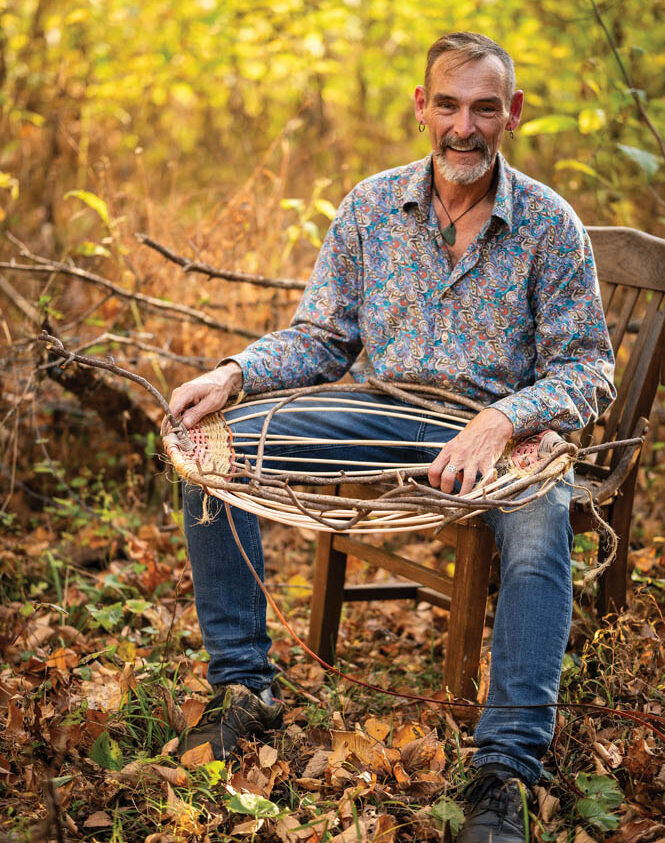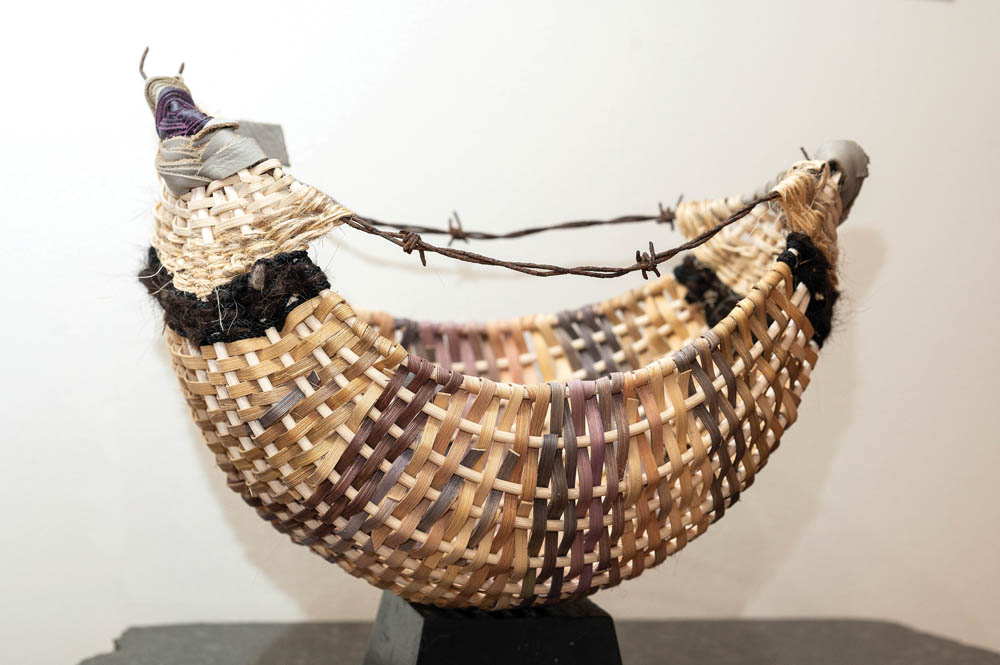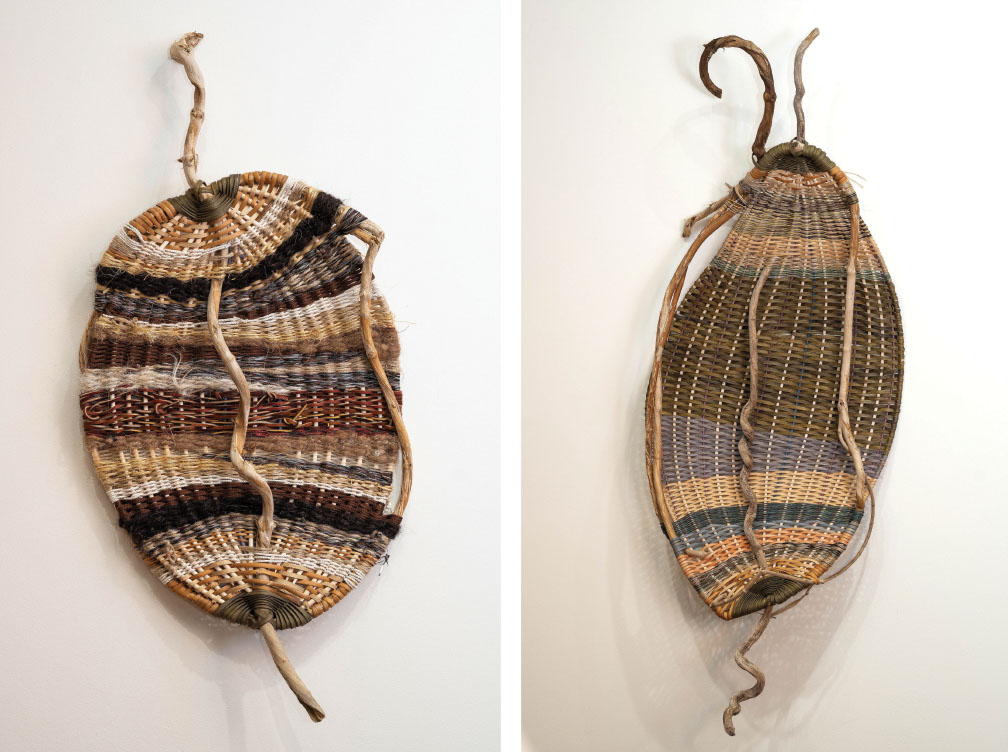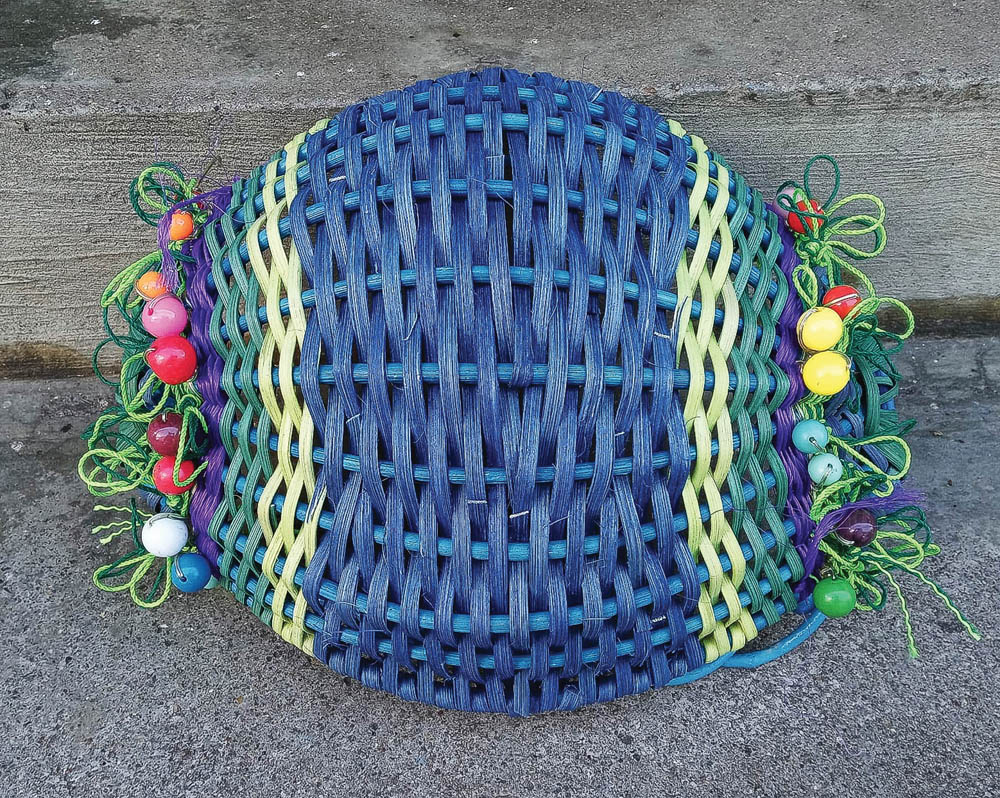
Forty years ago, Joe Bruneau happened to take a weekend craft course to enhance his studies as an art major at Warren Wilson College. The class was basket weaving, and while Bruneau would go on to explore other mediums (“I will try working with anything that isn’t poisonous or hazardous,” he says), the magic of twisting reeds and vines into beautiful, functional baskets had him transfixed.
His first exposure to the craft that long-ago weekend was spurred by a request from an aunt. “She wanted to learn it herself, not realizing how the craft would affect me at that time,” Bruneau says. “I was teaching her a few weeks later, and I’ve been teaching ever since.” Teaching helped pay for his college expenses, and soon enough, the baskets in his life became doubly practical: He began selling his own work to further subsidize his education.


Bruneau is part of a deeply human tradition stretching back for millennia — even longer than was previously thought. Recently, partially intact baskets were discovered in a cave in southern Spain and dated to over 9,000 years ago. And the world’s earliest intact vessel, preserved in the arid Negev desert of Israel, is thought be a thousand years older than that.
Baskets were necessary everyday items, of course, but even that long ago, they featured geometric patterns indicating a visual as well as a practical appeal. Bruneau bases his own baskets on the traditional Appalachian ribbed model used for generations to carry and store potatoes, onions, fruit, eggs, and other products of soil and farm. “I start most all of my baskets from vines gathered in the woods,” explains the artist, who lived in Brevard from 1986 to 2020 and now resides in Madison County. “Grapevine, bittersweet, honeysuckle, and wisteria are some of my favorite vines, but just about anything can be used.” And it all takes patience, which is the first piece of advice he gives to those seeking to use vines as a medium.

Bruneau interweaves these locally gathered materials with the rattan that forms the base of each vessel. He may add such nontraditional items as wire, yarn, leather, beads, and even keys to give the piece heavy texture, along with dyes to add color and pattern. “It’s a truly organic process,” says Bruneau, who has no need to work from sketched designs. “The vine frame determines how the basket will evolve.”
While Bruneau’s baskets are made to hold things, the imaginative labor required to combine such a variety of materials into a coherent whole pushes them far beyond the quotidian. His signature patterning adds even more flair, so that many of his pieces are collected strictly as artwork and may never come in contact with a potato or an egg.
Bruneau has ventured as far as Tennessee to offer workshops and weaving demonstrations and will soon begin a series of workshops at Local Cloth, the fiber-arts studio and gallery in Asheville’s River Arts District, where he became a member artist this autumn. Bruneau’s work is also a fixture at shows mounted by the Madison County Arts Council, where his traditional baskets have been displayed along with work that is purely aesthetic — small, nest-like woven baskets sprouting branches and twigs, for example, or larger creations anchored to the twists and curls of woody vines.
“Most people want [baskets with] a ‘function’ to them,” Bruneau admits. “So I weave to sell. But I also weave to explore color and texture.”
Joe Bruneau, Marshall, see “Joe Bruneau” on Facebook. The artist’s work is available at FLOW (14 Main St., Marshall; at Gallery of the Mountains at the Omni Grove Park Inn (290 Macon Ave., Asheville; and at Local Cloth (408 Depot St. in the River Arts District, Asheville.
